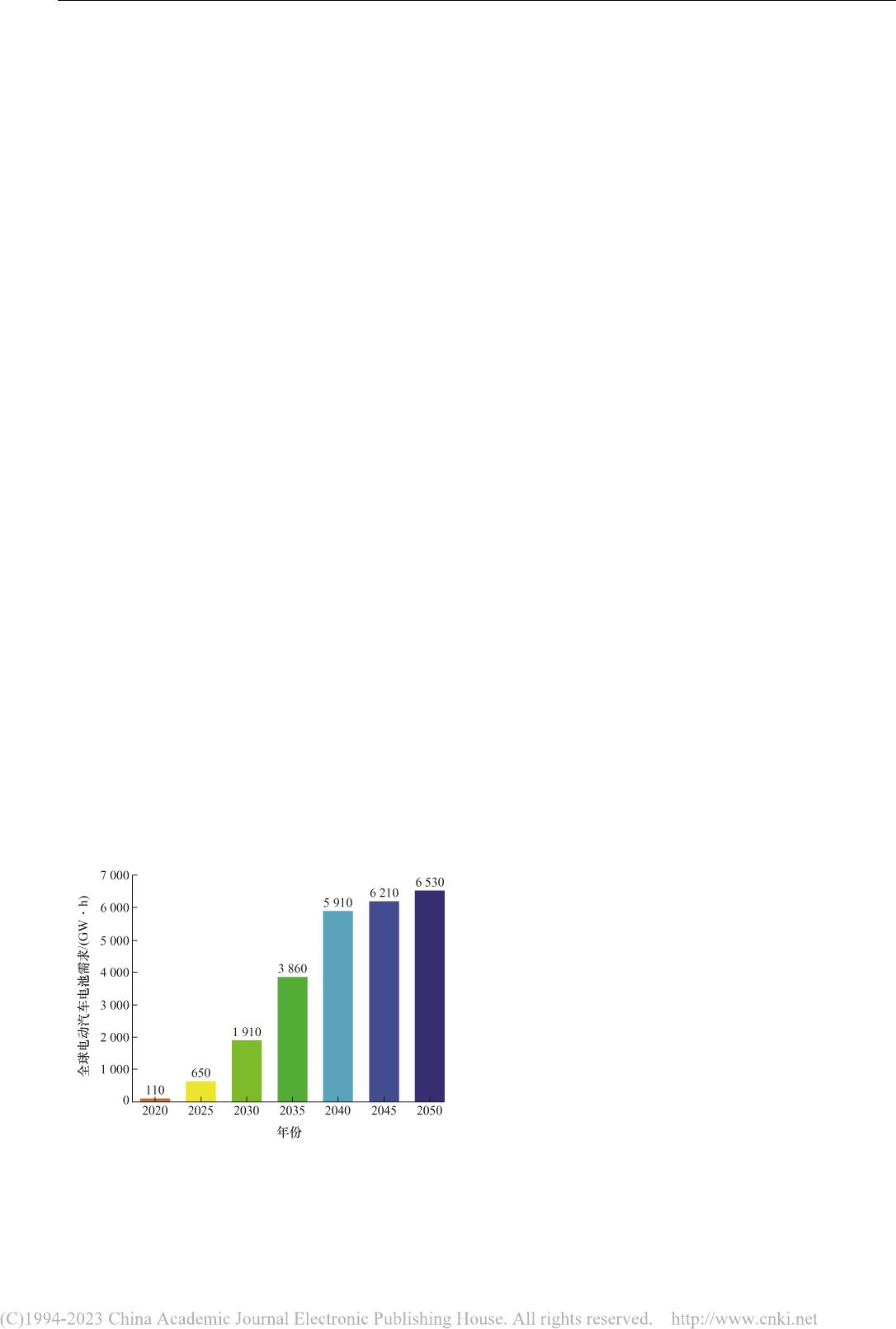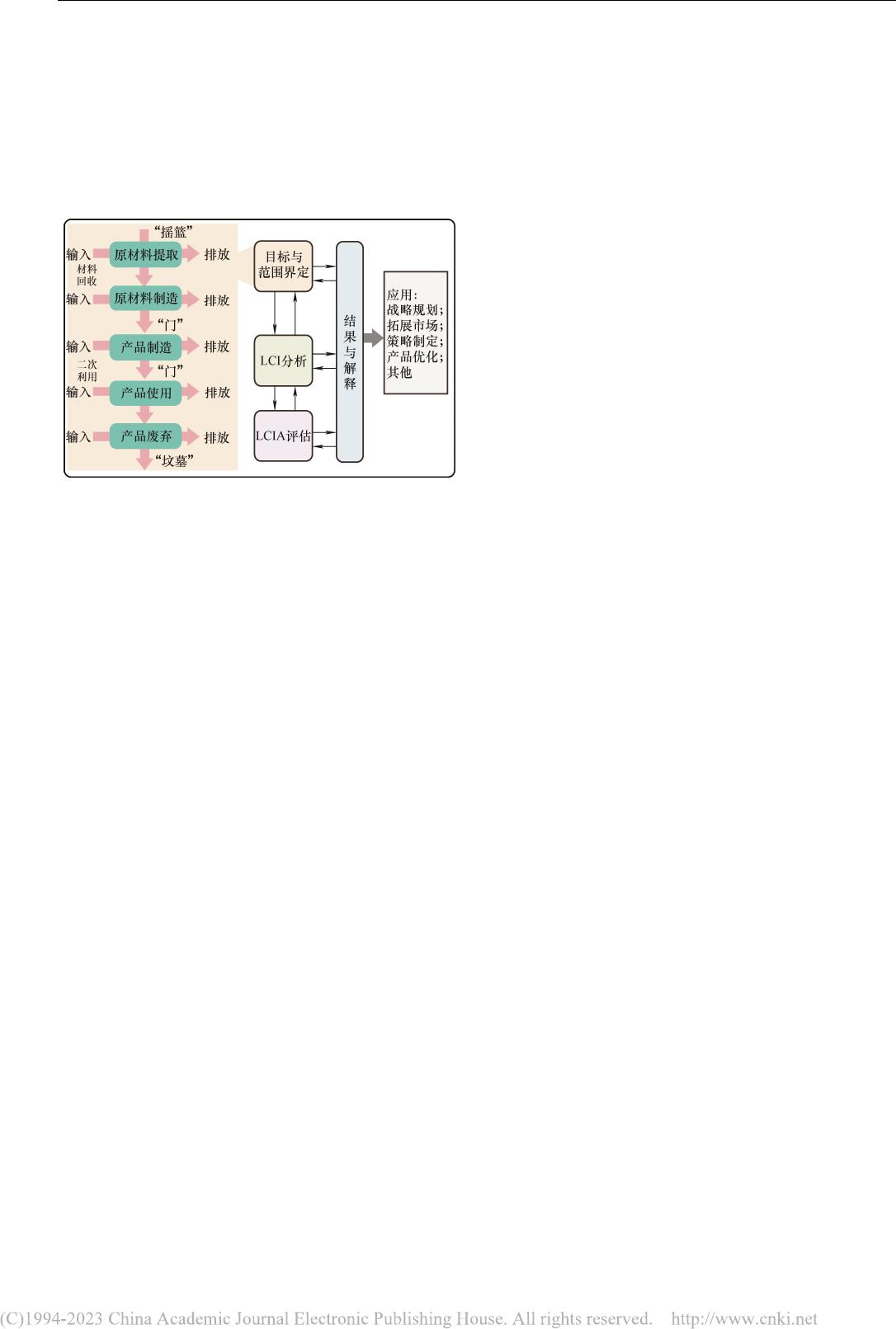
第58 卷第 22 期
2022 年11 月
机 械 工 程 学 报
JOURNAL OF MECHANICAL ENGINEERING
Vol.58 No.22
ov.
2022
DOI:10.3901/JME.2022.22.003
面向“双碳”战略目标的锂离子电池生命周期评价:
框架、方法与进展*
来 鑫1 陈权威 1 顾黄辉 1 韩雪冰 2 郑岳久 1
(1. 上海理工大学机械工程学院 上海 200093;
2. 清华大学车辆与运载学院 北京 100084)
摘要:在国家“双碳”重大战略驱动下,锂离子电池在迎来了重大发展机遇的同时,它的全生命周期碳足迹追踪与环境指标
评价成为研究热点,在碳排放计算及减碳措施方面遇到严峻挑战。首先,对全生命周期评价的基本框架、基本方法、评价指
标等基础共性问题进行简要概述。然后,从锂离子电池可持续发展出发,提出从“摇篮”到“摇篮”的全生命周期闭环评价
路线,对电池全生命周期内(包括电池生产、电池使用、梯次利用、电池回收与再制造等环节)各阶段碳排放计算的研究现状
与进展进行详细综述,总结各阶段潜在的研究热点与难点,提出一种“技术-生态-价值”综合评价框架。在此基础上,对锂
离子电池生命周期价值评价存在的机遇与挑战进行讨论,对资源风险与供应链风险进行分析与梳理。最后,总结与展望了能
源脱碳、体系创新、智能制造、优化管理、材料回收、碳捕集等六大潜在的锂离子电池全生命周期减碳措施。
关键词:锂离子电池;碳排放;全生命周期评价;双碳战略;电动汽车
中图分类:TM912
Life Cycle Assessment of Lithium-ion Batteries for Carbon-peaking and
Carbon-neutrality: Framework, Methods, and Progress
LAI Xin1 CHEN Quanwei1 GU Huanghui1 HAN Xuebing2 ZHENG Yuejiu1
(1. School of Mechanical Engineering, University of Shanghai for Science and Technology, Shanghai 200093;
2. School of Vehicle and Transportation, Tsinghua University, Beijing 100084)
Abstract: Driven by the Carbon-peaking and Carbon-neutrality strategic goals, lithium-ion batteries usher in significant development
opportunities. Meanwhile, it has become a research hotspot for tracking the life cycle carbon footprint and environmental indicators
assessment and faced severe challenges in carbon emission calculation and reduction measures. First, the basic framework, methods,
evaluation indicators, and other common problems of the life cycle assessment are briefly summarized. Then, a whole life cycle
closed-loop assessment route from "cradle" to "cradle" is proposed for the sustainable development of lithium-ion batteries. The
research progress of carbon emission calculation at all stages of the battery life cycle (including battery production, battery use,
echelon utilization, battery recycling, and remanufacture) is summarized in detail, the potential research hotspots and difficulties are
generalized, and a comprehensive evaluation framework of "Technology-Ecology-Value" is proposed. The opportunities and
challenges in lithium-ion batteries' life cycle value assessment are discussed, and the resource and supply chain risks are analyzed.
Finally, six potential carbon reduction measures for the whole life cycle of lithium-ion batteries are summarized and prospected, such
as energy decarbonization, system innovation, intelligent manufacturing, optimization management, material recovery, and carbon
capture.
Key words: lithium-ion battery; carbon emission; life cycle assessment; double-carbon strategy; electric vehicle
∗ 国家自然科学基金(51977131 ,52277223) 和上海市自然科学基金
(19ZR1435800)资助项目。20220622 收到初稿,20221005 收到修改稿



 VIP
VIP VIP
VIP VIP
VIP VIP
VIP VIP
VIP VIP
VIP VIP
VIP VIP
VIP VIP
VIP VIP
VIP